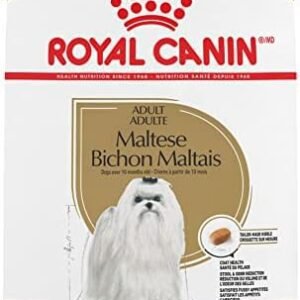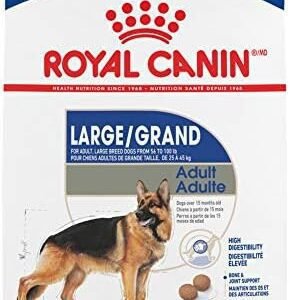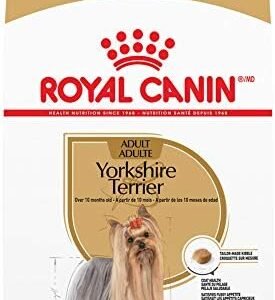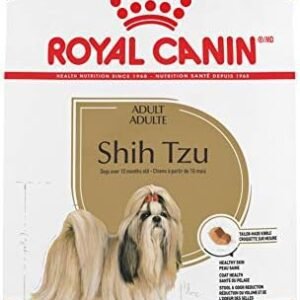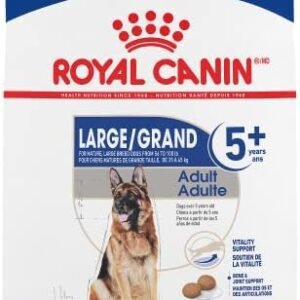Introduction
Are you curious about the foods you can safely share with your canine companion? Dogs, our loyal and beloved four-legged friends, often leave us wondering what they can and can’t eat. As responsible pet owners, it’s crucial to understand the nuances of our furry friends’ diet to keep them healthy and happy. Today, we’re delving into the intriguing world of jicama and its potential place in your dog’s diet.

You might be surprised to learn that jicama, a lesser-known vegetable, has been cherished for its crisp texture and mild, slightly sweet taste. It’s often enjoyed by humans in various culinary dishes. But what about our canine friends? Can dogs eat jicama? In this article, we’ll explore the safety and suitability of jicama for dogs, discuss its nutritional value, and offer insights into its potential benefits and risks. Additionally, we’ll provide guidance on incorporating jicama into your dog’s diet if it’s deemed safe and beneficial. So, if you’ve ever wondered whether your furry friend can munch on this unique root vegetable, read on to find out.
Dogs hold a special place in our hearts, and their health and well-being are a top priority. Understanding the role of specific foods in their diet is essential. We’ll help you navigate the world of jicama and make informed decisions about whether it’s a suitable addition to your dog’s meals.
Table of Contents
Is jicama safe for dogs?
When it comes to sharing human food with our canine companions, safety is paramount. It’s only natural to want to ensure that anything we feed our dogs is not harmful to them. So, can dogs eat jicama? The good news is that jicama, also known as Mexican turnip or yam bean, is generally considered safe for dogs when fed in moderation. This unique root vegetable boasts a crunchy texture and a mildly sweet, refreshing taste, making it appealing to many dogs.
The Nutritional Value of Jicama
Before we dive into the potential benefits and risks of jicama for dogs, let’s take a look at the nutritional profile of this vegetable. Jicama is a low-calorie food that contains a variety of nutrients beneficial to both humans and, potentially, dogs. Here’s a table detailing the nutrition facts of jicama per 100 grams:
| Nutrient | Amount |
|---|---|
| Calories | 38 kcal |
| Carbohydrates | 9 grams |
| Dietary Fiber | 4.9 grams |
| Sugars | 1.8 grams |
| Protein | 0.72 grams |
| Vitamin C | 20.2 mg (34% DV) |
| Vitamin A | 0 IU (0% DV) |
| Potassium | 150 mg (4% DV) |
| Folate | 12 mcg (3% DV) |
Jicama is particularly known for its impressive vitamin C content. This nutrient can be beneficial for dogs, just as it is for humans. Vitamin C supports the immune system and promotes overall health.
Nutritional Benefits for Dogs
While dogs have different nutritional needs than humans, jicama can offer some potential benefits when included in their diet:
Low in Calories: Jicama is a low-calorie food, which can be advantageous if you’re concerned about your dog’s weight or as a healthy treat option for dogs on a diet.
Rich in Dietary Fiber: The dietary fiber in jicama may help support healthy digestion in dogs by preventing constipation and promoting regular bowel movements.
Vitamin C: As mentioned earlier, jicama is packed with vitamin C, which plays a role in supporting a strong immune system in dogs. It also contributes to skin health and may help reduce inflammation.
Hydration: Jicama has a high water content, which can help keep your dog hydrated. Proper hydration is vital for their overall well-being.
Low in Fat: With minimal fat content, jicama can be a suitable addition to your dog’s diet if you’re concerned about excessive fat intake.
Potential Drawbacks of Jicama for Dogs
While jicama offers several nutritional benefits, there are a few considerations to keep in mind:
Gas and Digestive Upset: Some dogs may experience gastrointestinal discomfort, including gas and diarrhea, when introduced to jicama for the first time. To mitigate this, introduce jicama slowly and in small quantities.
Allergic Reactions: While jicama is not a common allergen for dogs, there’s always the possibility of individual sensitivities. Watch for signs of an allergic reaction when offering jicama to your dog for the first time.
Potato and Lima Bean Varieties: Note that the skin and seeds of certain jicama varieties can contain a toxin called rotenone. This substance is also found in potatoes and lima beans and can be harmful to dogs if consumed in large amounts. When serving jicama to your dog, it’s a good practice to peel and deseed it to avoid any potential risks associated with these compounds.
- Moderation is Key: As with any treat or addition to your dog’s diet, moderation is essential. Jicama should not replace your dog’s regular meals but can be offered as an occasional and healthy treat.
By being aware of both the potential benefits and risks, you can make an informed decision about whether to include jicama in your dog’s diet. If you decide to introduce this vegetable to your furry friend, it’s crucial to follow the guidelines for safe preparation and portion control.
Now that we’ve explored the safety and nutritional aspects of jicama for dogs, let’s delve deeper into how to incorporate jicama into your dog’s diet effectively and safely in the next section.
How much jicama can a dog eat?
Now that we’ve established that jicama can be a safe and nutritious addition to your dog’s diet, it’s essential to understand the importance of moderation. While it can offer health benefits, excessive consumption of jicama or any treat can lead to digestive issues or unnecessary weight gain in dogs. Here are some key points to consider:
1. Moderation is Key: Treats, including jicama, should only make up a small percentage of your dog’s daily calorie intake. Most of their nutrition should come from their regular, balanced dog food. As a general guideline, treats should not exceed 10% of their daily calorie consumption.
2. Start Small: When introducing jicama to your dog’s diet for the first time, start with a small piece. This will allow you to observe how your dog reacts to this new food. Some dogs may take to it immediately, while others may need time to adjust. Be patient, and monitor for any adverse reactions.
3. Safe Preparation: To ensure your dog’s safety when offering jicama, it’s crucial to prepare it in the right way. Thoroughly wash the jicama, peel it, and remove any seeds. The skin and seeds of certain jicama varieties can contain potentially harmful compounds. By taking these precautions, you can minimize any risks.
4. Consider Your Dog’s Size and Breed: The size and breed of your dog can influence how much jicama they can tolerate. Larger dogs may be able to enjoy slightly larger portions, while smaller dogs should receive more modest servings. As a rough guideline, consider a slice or cube of jicama for small breeds and a bit more for medium to large breeds.
5. Appropriate Serving Sizes: To give you a better idea of how much jicama to serve based on your dog’s weight, here’s a general breakdown:
- Small Dogs (under 20 pounds): Start with a tiny piece, about the size of a thumbnail. Gradually increase the portion based on your dog’s response.
- Medium Dogs (20-50 pounds): Begin with a slice or cube around the size of a quarter. Adjust the portion according to your dog’s reaction.
- Large Dogs (50 pounds or more): Offer a slightly larger piece to start, like half of a jicama slice, and observe your dog’s response.
Remember that these are just initial serving sizes. It’s essential to assess how your dog reacts and adjust the portions accordingly. Some dogs may be more tolerant of jicama than others, but it’s always wise to exercise caution when introducing any new food.
By following these recommendations and paying attention to your dog’s individual needs and preferences, you can safely incorporate jicama into their diet and ensure they enjoy this healthy treat without any issues.
In the following section, we will explore the potential risks and hazards related to feeding jicama to dogs. It’s crucial to be aware of these potential issues so that you can keep your furry friend safe and healthy.
What are the risks of feeding jicama to dogs?
While jicama can be a nutritious addition to your dog’s diet when offered in moderation, there are potential risks and hazards that you should be aware of. Dogs, like humans, can experience food allergies or intolerances, and certain components of jicama may not agree with all dogs. It’s important to be informed about these potential issues to ensure your dog’s well-being. Here’s what you should consider:
1. Food Allergies: Dogs, like humans, can develop allergies to various foods. While jicama is not a common allergen for dogs, some canines may be sensitive to it. It’s crucial to monitor your dog for any signs of allergic reactions, which may include itching, hives, swelling, digestive upset, or respiratory distress. If you suspect your dog is allergic to jicama, consult your veterinarian.
2. Short-term Signs of Food Intolerance: Food intolerance is different from an allergy and can manifest as gastrointestinal distress in dogs. The short-term signs of food intolerance may include vomiting, diarrhea, gas, or an upset stomach. If you notice any of these symptoms after giving your dog jicama, it’s advisable to withhold the treat and consult with your vet.
3. Hazards Related to Certain Components: While jicama itself is generally safe, specific components can pose risks. The skin and seeds of some jicama varieties contain rotenone, a substance that can be toxic when ingested in large quantities. To mitigate this risk, always peel and seed jicama before offering it to your dog.
4. Signs of Allergic Reactions: Allergic reactions in dogs can vary, but common signs include:
- Itching and scratching: Excessive itching, especially around the face, paws, and ears, can be an early sign of an allergic reaction.
- Hives: Raised, red welts on the skin, often accompanied by itching and swelling.
- Swelling: Swelling of the face, lips, or around the eyes can indicate an allergic response.
- Digestive Distress: Vomiting, diarrhea, or excessive gas can be signs of food intolerance or allergy.
It’s crucial to watch out for these signs when introducing any new food to your dog, including jicama. In case of an allergic reaction or food intolerance, seek veterinary care promptly.
5. Specific Issues: In some cases, dogs may have specific health conditions that could be aggravated by certain components in jicama. For example, jicama’s fiber content can be challenging for dogs with sensitive stomachs or those prone to gastrointestinal issues. If your dog has a history of such problems, exercise caution and consult your vet before incorporating jicama into their diet.
Understanding these potential risks and being vigilant about your dog’s well-being is essential when feeding jicama. By paying attention to your dog’s response and monitoring for any adverse reactions, you can provide a safe and enjoyable dietary experience.
In the next section, we will delve into creative ways to feed jicama to your dog and make it an enjoyable and healthy addition to their meals. Additionally, we will share some recipes and ideas for homemade treats and snacks with jicama.
How to Feed Jicama to Your Dog and Make It More Enjoyable for Them
Now that we’ve covered the potential benefits and risks of feeding jicama to your dog, let’s explore how you can incorporate this nutritious vegetable into your dog’s diet in a safe and enjoyable way.
Ways to Feed Jicama to Your Dog:

Fresh and Raw: Jicama can be sliced or diced into bite-sized pieces, making it a crunchy and hydrating treat. It’s important to peel and seed the jicama to avoid any potential digestive issues or toxicity from the skin or seeds. Start with a small amount and observe your dog’s reaction to ensure they tolerate it well.
Steamed or Boiled: For dogs who may have difficulty digesting raw foods, steaming or boiling jicama can make it gentler on their stomachs. Just be sure not to add any seasonings, spices, or oils. Plain, cooked jicama can be a nutritious addition to their meals.
Incorporate into Meals: You can chop jicama and mix it into your dog’s regular meals. It can add some extra crunch and flavor to their kibble or homemade dog food. Be mindful of the quantity, ensuring it doesn’t exceed their daily calorie and nutritional requirements.
Homemade Treats and Snacks with Jicama:
Making homemade treats and snacks with jicama can be a fun and creative way to enhance your dog’s meals and offer them a variety of flavors. Here are some ideas and recipes to get you started:
Jicama Popsicles:
- Ingredients:
- Jicama, peeled and diced
- Water or low-sodium chicken or beef broth
- Instructions:
- Blend the diced jicama with water or broth until you have a smooth mixture.
- Pour the mixture into ice cube trays and freeze.
- Serve these jicama popsicles as a refreshing treat on a hot day.
Jicama and Apple Bites:
- Ingredients:
- Jicama, peeled, seeded, and diced
- Apple, peeled, cored, and diced
- Plain Greek yogurt
- Instructions:
- Combine the jicama and apple pieces in a bowl.
- Add a dollop of plain Greek yogurt for extra creaminess.
- Mix well and serve as a tasty snack.
Jicama and Carrot Chips:
- Ingredients:
- Jicama, peeled and thinly sliced
- Carrots, peeled and thinly sliced
- Instructions:
- Mix the jicama and carrot slices in a bowl.
- Arrange them on a baking sheet and bake at a low temperature (around 200°F or 93°C) until they become crispy.
- Allow them to cool before offering them as a crunchy, low-calorie snack.
Jicama Peanut Butter Bites:
- Ingredients:
- Jicama, peeled, seeded, and diced
- Natural, unsalted peanut butter
- Instructions:
- Spread a small amount of peanut butter on the jicama pieces.
- Place them in the freezer until the peanut butter hardens.
- Serve as a satisfying, protein-rich treat.
Important Considerations:
When making or offering homemade treats with jicama, always prioritize your dog’s safety and dietary needs. Here are some essential considerations:
- Monitor portion sizes: Treats, even healthy ones, should not make up more than 10% of your dog’s daily calorie intake.
- Avoid seasonings: Do not use spices, seasonings, or condiments that may be harmful to your dog.
- Tailor to your dog’s preferences: Some dogs may have specific flavor preferences. Feel free to adjust recipes to suit your dog’s tastes.
As with any dietary changes, start slowly and in moderation. Observe your dog’s reaction to ensure they tolerate jicama well and do not experience any adverse effects. If your dog has any underlying health issues or specific dietary requirements, consult your veterinarian before introducing new foods.
In the next section, we’ll address common questions and concerns about dogs eating jicama to provide a comprehensive understanding of this vegetable’s place in your dog’s diet.
10 FAQs About Dogs Eating Jicama
As we delve deeper into the world of canine nutrition, it’s natural to have questions about feeding specific foods like jicama to your dog. In this section, we’ll address some of the most frequently asked questions about dogs eating jicama.
1. Can dogs eat jicama daily?
No, it’s not recommended to feed jicama to your dog daily. While jicama can be a healthy addition to your dog’s diet in moderation, it should not replace their regular dog food. Treats, including jicama, should make up no more than 10% of your dog’s daily calorie intake.
2. Is it safe to give jicama to puppies?
Puppies can enjoy small amounts of jicama, but their digestive systems are still developing. Introduce jicama gradually and ensure it’s cut into small, manageable pieces. Monitor their response and consult your veterinarian if you have any concerns.
3. Can jicama be a part of a dog’s weight loss diet?
Yes, jicama can be included in a weight loss diet for dogs. It’s low in calories and can serve as a healthy, low-fat treat. However, always monitor portion sizes and consult your vet to ensure it aligns with your dog’s dietary requirements.
4. Are there specific health benefits to feeding jicama to dogs?
Jicama offers several potential health benefits for dogs, including dietary fiber, vitamins, and minerals. These can support digestion and overall health. However, it’s essential to maintain a balanced diet, and jicama should complement, not replace, a high-quality dog food.
5. Can jicama help with dog digestion?
The fiber in jicama can aid in digestion for some dogs. It may help regulate bowel movements and support a healthy gut. However, if your dog has digestion issues, consult your veterinarian before making dietary changes.
6. Can jicama be harmful to dogs with allergies?
Jicama is not a common allergen for dogs. However, every dog is unique, and there’s always a risk of individual food allergies. When introducing jicama for the first time, observe your dog for signs of an allergic reaction, such as itching, swelling, or digestive issues.
7. Is it okay to mix jicama with other dog-safe foods?
Yes, you can mix jicama with other dog-safe foods to create flavorful and nutritious meals or snacks. Try combining jicama with carrots, apples, or plain Greek yogurt for variety. Ensure that the ingredients are safe for dogs and free from harmful seasonings or additives.
8. Can jicama be given to dogs with specific dietary restrictions?
If your dog has specific dietary restrictions, such as diabetes or food sensitivities, consult your veterinarian before introducing jicama. While it can be a healthy addition to many diets, individual needs vary.
9. Can jicama help freshen a dog’s breath?
The crunchy texture of jicama may help with cleaning your dog’s teeth and freshening their breath to some extent. However, it’s not a substitute for proper dental care, such as regular brushing and dental chews.
10. What should I do if my dog eats too much jicama?
Feeding your dog too much jicama can lead to digestive upset or diarrhea. If your dog consumes an excessive amount, observe their condition closely. Ensure they have access to freshwater, and temporarily reduce their food intake to give their digestive system time to recover. If symptoms persist or worsen, consult your veterinarian.
Remember that while jicama can be a nutritious and tasty addition to your dog’s diet, it’s important to be mindful of moderation, portion sizes, and individual dietary needs. Always prioritize your dog’s well-being and consult your veterinarian if you have concerns or specific questions about their diet.
In the concluding section, we’ll summarize the key points of this article and provide some alternative treat options for your furry friend.
Conclusion
In conclusion, we’ve explored the intriguing question of whether dogs can eat jicama and provided comprehensive insights into the topic. Jicama, with its crisp texture and subtle sweetness, can indeed be a safe and healthy treat for dogs when given in moderation. However, it’s crucial to keep several key points in mind.
First and foremost, moderation is the key when it comes to feeding jicama to your furry friend. While jicama offers certain nutritional benefits, including fiber, vitamins, and minerals, it should not replace your dog’s primary diet. Treats, including jicama, should make up no more than 10% of your dog’s daily calorie intake.
We’ve also discussed appropriate serving sizes based on your dog’s weight and the importance of monitoring your dog’s reaction to jicama, especially when introducing it for the first time. Each dog is unique, and some may have allergies or sensitivities that can trigger adverse reactions.
As you can see, jicama can be a delightful addition to your dog’s diet when used thoughtfully. If you’re looking for alternative fruits or treats that are safe and healthy for your canine companion, consider options like apple slices, blueberries, or carrots. These foods are lower in sugar and acidity than jicama and provide similar or better nutritional benefits.
We hope this article has helped you understand the role of jicama in your dog’s diet and how to incorporate it safely. If you have any questions or want to share your experiences, please feel free to reach out in the comment section below. Your feedback and insights are invaluable to us, and we’d love to hear from you.




















